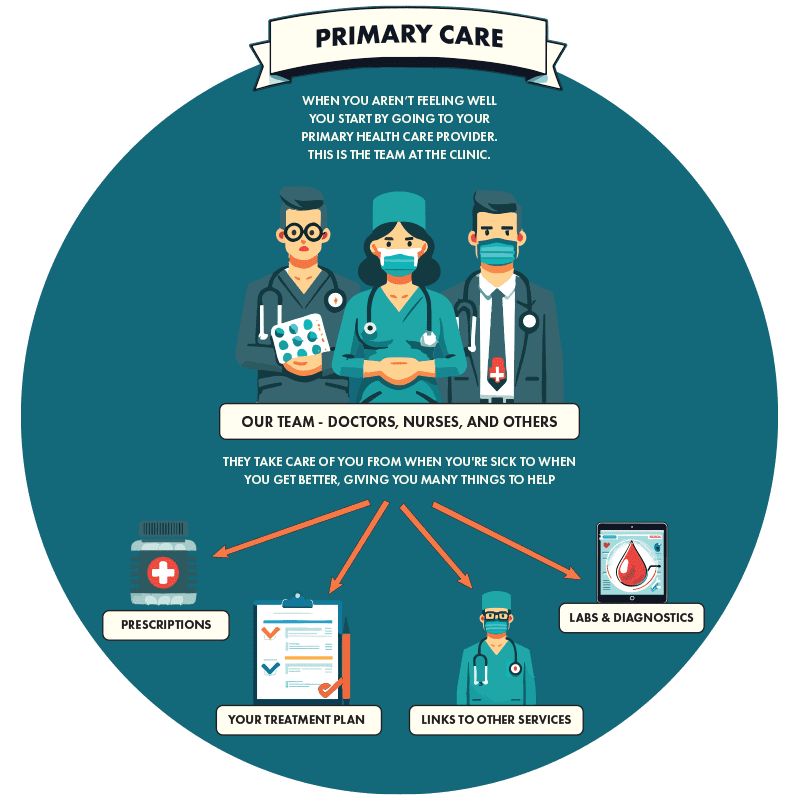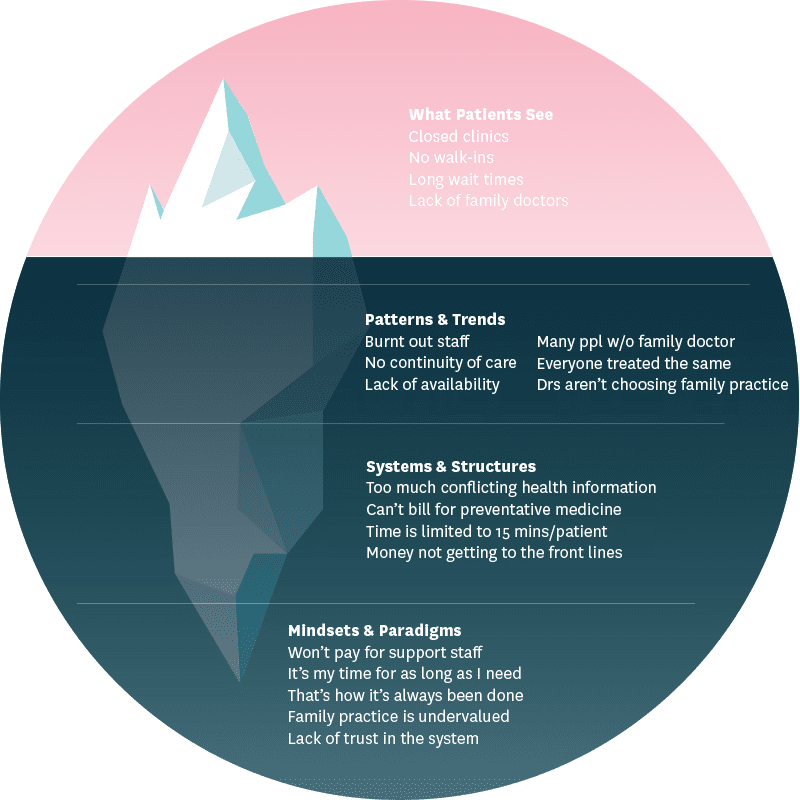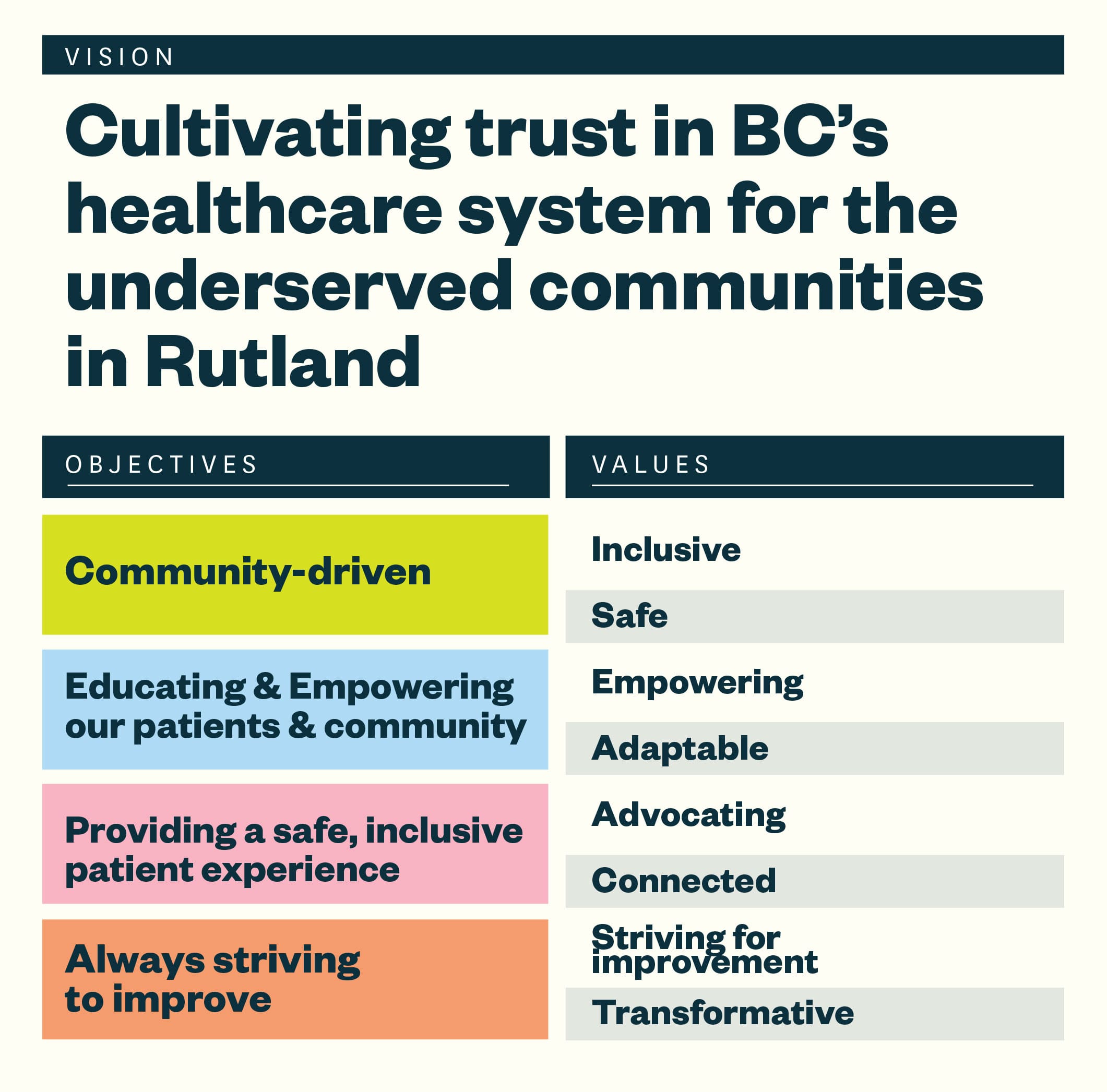Case study
Reimagining a community health clinic

the challenge
solving the right problem

Guiding Questions
-
What are the systemic challenges for healthcare in BC? In Canada?
-
Who will our clinic be serving? What are each of their unique needs?
-
How can we integrate the needs of our community with the team-based model of primary healthcare?
-
What are the core driving principles of our community health clinic? What must we do in practice to serve these principles?

The team realised that a community health clinic is not only a physical space — it's about knowing the people who'll use it and the problems they face. We needed to see the big picture, including the social, geographic, and cultural issues that affect the health of the communities the clinic would support.

A systemic design approach was key for success.It allowed the team to identify not just the problems but also why they exist.
By understanding the root causes, we could make a health clinic that really helps—both now and in the future.
It's about creating a place that can evolve as the community's needs do.

From the outset, getting feedback from the community was vitally important. People in the area know best what they need when it comes to their health.
By listening to members of the community, we could make sure the clinic works well for everyone, respects cultural needs, and would become a place people can trust.
It's all about creating a clinic that's there for everyone.
Key Insight
In British Columbia, every community is different, with their own cultures, health issues, and needs. A health clinic that understands and meets these diverse needs can make a huge difference.solving the problem RIGHT

A Principles-Based Approach & Strategy
The team broke out the launch of the clinic into two phases: (1)pre-opening staff training; (2) launch and community connection.
Importantly, the team defined a set of core principles to guide these phases and created several key objectives connected to these principles to drive the clinic’s initial operations.

Tools & Methods
System Mapping
Systemic Design
User Research
Service Design
Developmental Evaluation
System Force Analysis
Causal Loop Diagrams
Information Design
Illustration
Stakeholder Facilitation
Value Proposition Canvas
Participatory Action Research
